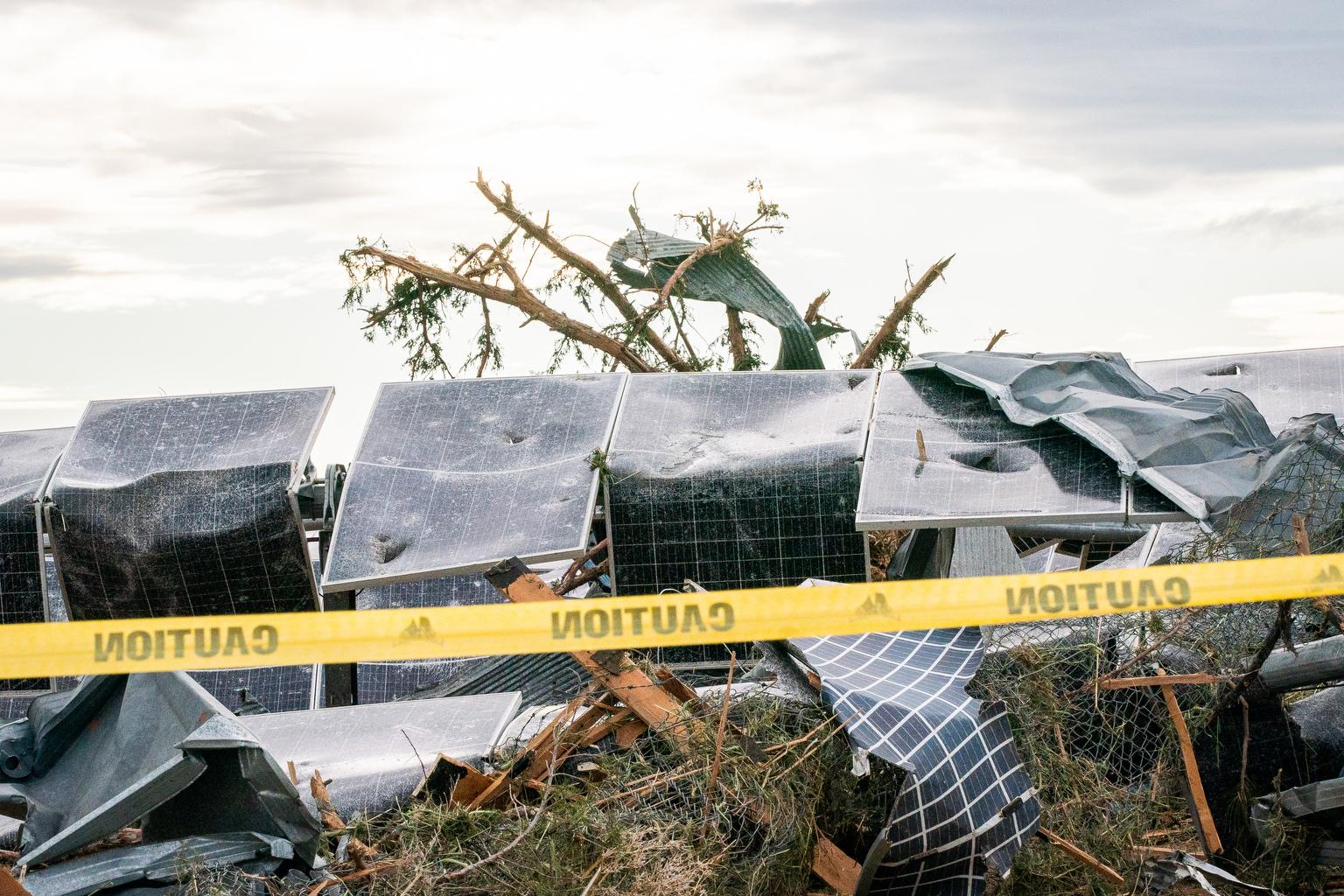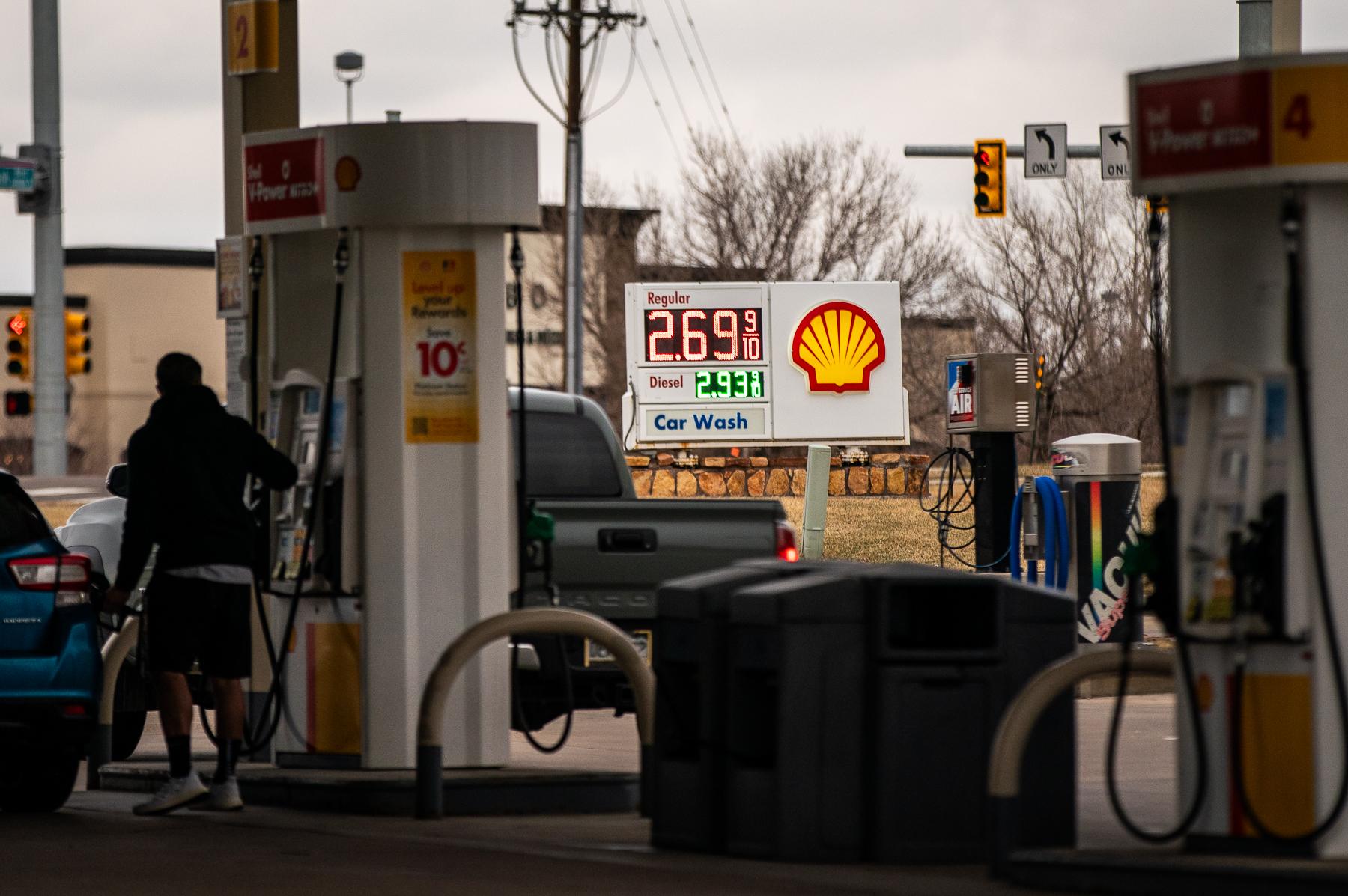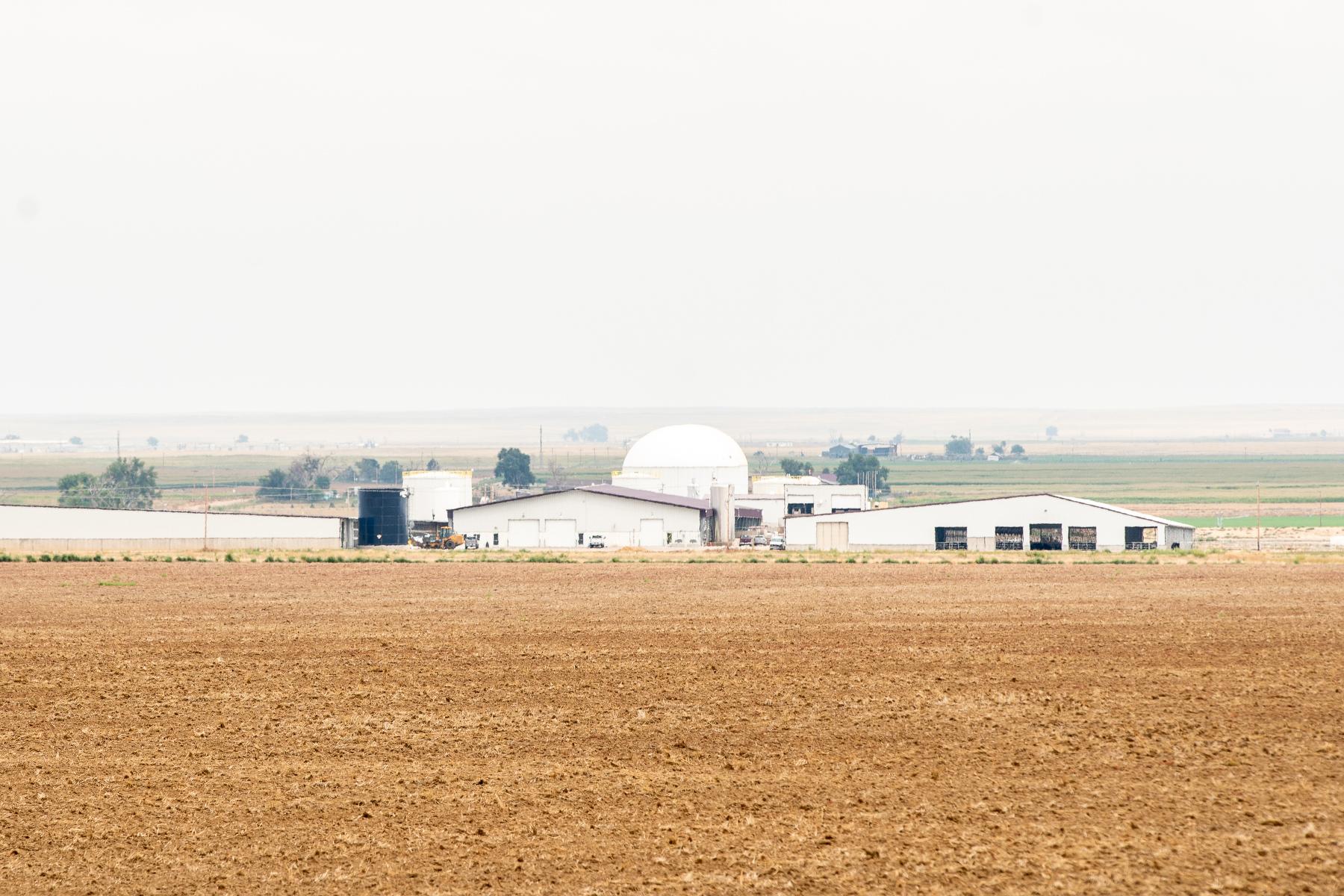
A tornado that touched down in Bennett, Colorado, on Sunday not only damaged more than a dozen buildings in the small town east of Denver. It also tore through Pioneer Solar, an 80-megawatt solar farm feeding power to communities along the southern Front Range.
Photos taken by CPR News Monday show solar panels ripped and bent like clocks from a Salvador Dalí painting. Steel siding from a nearby farm also blew into the renewable energy installation, further trashing the site at Hardback Road and Colfax Avenue.
The 540-acre facility began operations in late 2020. CORE Electric Cooperative, a Sedalia-based utility providing electricity, purchases the power for more than 375,000 residents living in a service territory stretching from the mountains southwest of Denver to parts of the eastern plains. Castle Rock is the largest community served by the power provider.
Amber King, the communications manager for CORE, said the co-op is still assessing the damage to the facility in coordination with Idemitsu Renewables, the California-based owner and operator of the facility. She expected to have more information by Wednesday.
“It won’t impact reliability to our system, and we will continue to work with them to understand the full implications of that damage,” King said.
The utility has agreements to purchase power from three other utility-scale solar systems and two wind energy operations. It also owns a 25 percent share of the Comanche 3, a major coal-fired power plant in Pueblo built by Xcel Energy and set to close by 2031.
Solar panels require exposure to the outdoor environment, which creates a conundrum for power providers. The systems offer one of the cheapest sources of electricity and the best ways to confront climate change.
At the same time, natural disasters known to damage renewables — such as hurricanes and hailstorms — will likely grow more severe due to rising global temperatures. Scientists, however, are still teasing out the exact relationship between tornadoes and climate change.
While natural disasters can wreck wind and solar sites, a shift to renewables might not leave the grid more vulnerable to extreme weather events. A 2021 analysis conducted by the National Renewable Energy Laboratory found severe heat waves and storms aren’t likely to impact large areas at the same time. As a result, a grid with more renewables would probably have enough resources to backup limited damage to specific installations.
The analysis found moderate weather patterns could have a far larger impact. If a whole region, for example, experiences hot or cool temperatures alongside limited sunlight and low winds, grid operators could struggle to deliver sufficient power to customers.
Funding for public media is at stake. Stand up and support what you value today.









